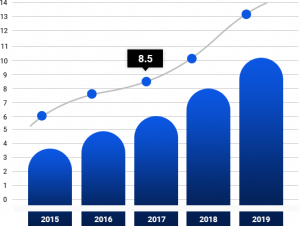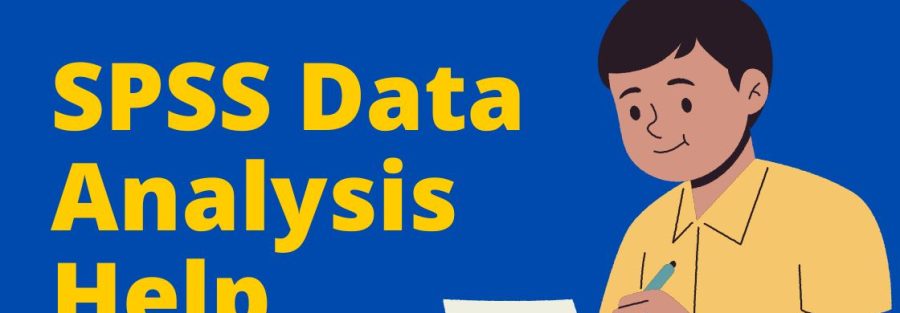SPSS is an acronym that stands for Statistical Package for the Social Sciences. Essentially, this is a computer package that helps students, scholars and researchers alike to analyze quantitative data. The main advantage of using this computer package is that it makes the entire process of analyzing data quite easy. Unfortunately, some students do not fully understand how to use it. For this reason, some opt to look for SPSS data analysis help.
There is nothing wrong with looking for this kind of guidance as long as you order it from a legit and reliable company. You may be happy to know that we are among the few companies that can guide you with analyzing data using SPSS. To obtain our professional help, all that you have to do is to contact us today. Our SPSS experts are ready to help you.
Table of Contents
When to use spss for data analysis
Generally, knowing when to use SPSS for data analysis is as important as knowing how to use this computer package. A helpful rule of thumb is that you should use this software when analyzing quantitative data. Normally, data is divided into two broad categories. These are namely qualitative and quantitative data. Qualitative data assume the textual format.
As a result of this, it is usually not possible to analyze this kind of data using statistical tests. On the other hand, quantitative data usually assumes numerical values. It then becomes possible for one to analyze quantitative data using SPSS. Regrettably, some students find it challenging to differentiate qualitative from quantitative data. If you are one of such students, then you could surely use some SPSS data analysis help.
Why order SPSS data analysis help?

Undoubtedly, SPSS makes it easy for one to analyze quantitative data. Using this computer package makes it simple to conduct lengthy statistical calculations that would otherwise require lengthy calculations. It also minimizes the chances of one making an error when analyzing this kind of data.
While this is true sometimes it becomes necessary to order SPSS data analysis help for several reasons. For starters, ordering this kind of assistance helps one to learn how to use this computer software. Subsequently, one is able to develop a new set of skills. Additionally, one is able to correctly analyze data. As a result of this, the reliability of the findings of one’s study is enhanced. It follows then that seeking guidance with using this software is such a good idea.
The importance of analyzing quantitative data
The truth is that analyzing quantitative data is neither a simple nor an enjoyable task for many. Subsequently, one might therefore wonder why he/she should go through all the trouble of analyzing such data. Well, analyzing this type of data is important due to a number of reasons. First, it is worth noting that quantitative data in their raw form might not make any sense. For instance, without analysis of responses from a survey such data may not help one in making an evidence-based decision.
Secondly, quantitative data in their raw form are quite voluminous. This “bulkiness” makes it difficult for one to handle them. Anyone who understands how to use spss for data analysis knows that one of the easiest ways of condensing such data is by analyzing them. Generally, it is not possible to conduct an empirical study without conducting data analysis.
Factors to consider when analyzing data using SPSS
There is no denying that the whole process of analyzing quantitative data is such a technical activity. One ought to be well-grounded in research methods to successfully execute this academic task. Normally, there are several factors that you have to consider before analyzing data using this computer package. One of such factors is the level of measurement of the quantities data. Generally, there are four main levels of measurement.
Our experts who offer affordable SPSS data analysis help are perfectly aware of these four levels. The lowest level of measurement is nominal. When data are measured at this level, the numerical value assignment to them serves as a mere label. For instance, when measuring the variable gender, you can decide 1 to stand for male and 2 to stand for female.
Ordinal and interval levels of measurement
Ordinal is the second lowest level of measurement. The difference between nominal and ordinal levels of measurement is that data at ordinal level, data can be ranked. It is therefore possible to differentiate the lowest sore from the highest score when a variable is measured at this level. However, it is worth important to note that the difference between a score of a variable that is measured at ordinal level cannot be quantitatively measured. For instance, when it is clear that a professor occupies a higher rank than a graduate assistant, this difference may not be statically measured.
If there is something about this level of measurement that you do not fully understand, then you can always order our spss data analysis help in research. Data that are at interval level of measurement lack an absolute zero but the difference between different scores can be quantitatively measured.
Ratio level of measurement
In research, this is considered to be the highest level of measurement. A key feature of this type of data is that zero is absolute. Moreover, it is possible to statistically measure the difference between different scores. Normally, it is possible to conduct a wide range of statistical tests on data that are at this level of measurement. Variables such as income, height, length and weight can be measured at this particular level. Without first determining the specific level of measurement of data, it becomes extremely difficult to run the correct test.
Are you unsure of the differences that exist between the four conventional measurement levels? If affirmative, then you could surely use our SPSS data analysis help. Our SPSS experts are ready to explain to you what these different levels of measurements mean as clearly as possible.
Independence of the samples as an important factor to consider before analyzing data using SPSS
Another important factor to consider when analyzing data using SPSS is whether the data are paired. Dependent or paired samples are where the participants are observed twice. In most cases these students assume a before and after treatment approach. In such a scenario the same group of participants is observed before a treatment is introduced and after it is introduced. It is possible to analyze such data using statistical tests such as a dependent t-test.
For instance, it would be an error to analyze such data using an independent t-test. Does this concept seem too complex for you? If yes, then you could surely use our spss data analysis examples. Such samples will help you to know when you can consider the samples to be paired.
Independent samples
Normally, it is advisable to determine whether the samples are independent or unpaired. When using independent samples, participants are not observed twice. For instance, this is usually common when using a control group. Randomized Control Trials (RCTs) seem to fall under this category. Participants from a treatment group are compared to those in a control group. Studies whose goal is to find the effect of a certain program or intervention may use independent samples.
It is possible to analyze data from this type of samples using dependent t-test of even ANOVA if the independent groups to be analyzed are more than two. Are you stuck at any stage of analyzing data from this type of sample? If yes, then it would be in your best interest to order SPSS data analysis help from this company.
The purpose of analyzing data as a key factor to consider when analyzing data using SPSS
You need to ask yourself the crucial question of why you need to analyze data before you can proceed to using spss to do it. There are different reasons why one may analyze quantitative data. For instance, you may be interested in assessing the difference that exists between two groups in relation to a certain variable. Also, your goal could be to assess the correlation of different variables.
Notably, knowing the purpose of analyzing data will help you in determining the best analysis technique to use. If you are unsure of what you intend to accomplish then you should consider ordering spss analysis help from this website. We promise you that our experts will walk with you through this journey. Subsequently, you will be able to analyze your quantitative data correctly and with ease.
A step by step SPSS data analysis guide
Generally, when analyzing data using SPSS, you need to begin this activity by creating a variable view. This view helps you key in data in this computer package. Some of the details that you may have to provide for each variable that you intend to analyze include, the name of the variable, level of measurement and decimals. Most students are confused when it comes to selecting the correct level of measurement.
There is no need to panic too much if you are suffering a similar fate. You can always request us to offer you professional spss data analysis help whenever you find it challenging to select the correct level of measurement. We shall be happy to help you with anything that you do not fully understand about creating the variable view.
Data input in SPSS
It becomes quite easy to key in data in SPSS once you are through with creating the variable view. While this is true, it is important to allocate enough time to this activity. The reason behind this is that it can consume a lot of time to finish inputting all the data. One of the advantages of ordering spss data analysis services on this website is that we can assist you with this activity. We have professionals who are willing to help you in keying in data in SPSS. Such experts are also available to help you with data cleaning.
Normally, data cleaning is important as it helps one to ensure that the data analysis is correct. It involves identifying missing data points or improper responses and determining how to deal with them prior to conducting data analysis. You will find our guidance with cleaning data to be impressive.
Is it important to begin with conducting descriptive analysis when using SPSS?
The answer to this question is yes. It is advisable to begin by conducting descriptive analysis. In some cases, it becomes important to generate descriptive statistics as a way of condensing data. At other instances, generating such data helps one to test normality of data before running an inferential statistics. To conduct t-tests, the data must be normally distributed. The majority of the scores should be around the mean and only a few scores lie far away from the mean.
It becomes possible to test normality of the data by generating descriptive statistics. It is a mistake to run a parametric test on data that do not have normal distribution. If you have spss data analysis project that you would like guidance with executing then we welcome you to contact us. Our experts are willing to assist you in generating descriptive statistics.
The key activities that we can guide you in tackling once you order our SPSS data analysis project
- Preparation of data analysis – Mostly, this involves data cleaning.
- Creating the variable view. Without the correct variable view, it is not possible to correctly key in the data.
- Generating descriptive statistics – Descriptive analysis can help one in determining normality of the data under consideration. Such information is important when deciding whether to use a parametric or nonparametric test.
- Determining the right inferential statistic test to conduct – Based on the level of measurement of your data and the purpose that you intend to accomplish by analyzing data, we will help you in choosing the right test.
- Interpretation of SPSS output – Once you order SPSS data analysis help from this company, we will be happy to help you in generating and interpreting the SPSS output.






